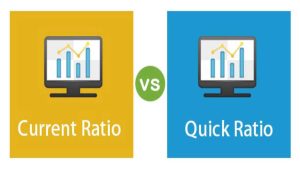Solvency Ratio
Solvency Ratio – All the financial resources used to operate a business are not collected directly from the founders. Businesses often incur debt to fund their operations, which may come in the form of deposits, debentures, or loans. Long-term debts incurred by the company must be settled, together with interest.
The potential of a business to fulfill its long-term debt commitments is referred to as its solvency.
Solvency ratios are an important part of financial analysis because they help determine whether a business has enough cash flow to meet its debt obligations. It is assumed that if a business has a poor solvency ratio, it will be more likely to struggle to meet its debt obligations and debt repayment.
It is often used by potential corporate lenders to assess a company’s solvency. Firms with a stronger solvency ratio are thought to be more able to fulfill their debt commitments, whereas businesses with such a weaker solvency ratio is thought to show a significant threat to banks & creditors.
Solvency ratios differ depending on the sector, however a solvency ratio of 0.5 is often deemed a decent amount to have.
Types of Solvency Ratios

Must Read – What is Turnover Ratio?
The variables of the balance sheet & income statement are used to measure the solvency ratio. Solvency rates aid in deciding if an organization’s long-term obligations will be repaid. This factor is useful for investors to understand because it provides information on an organization’s solvency.
Let’s take a closer look at the different forms of solvency ratios.
1. Debt to equity ratio
Amongst the most widely applied debt solvency ratios is debt to equity. It is often known as the D/E ratio. The D/E ratio is determined by dividing the total liabilities of a firm by the shareholder’s equity. These figures are derived from the firm’s balance sheet.
It is an essential measure for assessing a firm’s financial leverage. This ratio determines whether the shareholder’s equity is sufficient to offset all debts in the event of a market downturn.
Debt to Equity Ratio = Long-Term Debt/Shareholder Funds
OR
Debt to Equity Ratio = Total Liabilities/Shareholder Equity
When a high debt-to-equity ratio is integrated with a high compromise, it indicates that the corporation is dependent on debt to increase its growth. It also demonstrates the low solvency of the business.
2. Debt Ratio
A debt ratio is a ratio required to determine a company’s financial leverage. It is determined by dividing the total liabilities by the total capital. If the debt-to-equity ratio is greater, it indicates that the firm is extremely risky.
Bank loans, bonds payable, notes payable, and other long-term obligations are examples of long-term debts.
A low debt to capital ratio indicates a healthy company, whereas a higher ratio raises concerns about a business’s long-term viability. Trading on shares is feasible with a higher debt-to-capital ratio, that helps produce more revenue for the firm’s owners.
It is calculated as:
Debt Ratio = Long-Term DebtCapital / Debt Ratio
= Long-Term Deb/tNet Assets
3. Proprietary Ratio or Equity Ratio
Proprietary ratios are also referred to as equity ratios. It provides a connection among the owners money & the net assets or capital.
It is written as
Equity Ratio= Shareholders Funds/Capital
= Shareholders Funds /Total Assets
4. Interest Coverage Ratio
The interest coverage ratio is designed to decide whether or not the corporation will afford interest on its unpaid debt obligations. It is determined by calculating the firm’s EBIT by the interest paid owed on loans for the fiscal year.
A greater coverage ratio suggests the business’s solvency, whereas a weaker coverage ratio implies the firm’s debt burden.
It is calculated as:
Interest Coverage Ratio = EBIT/Interest on Long-Term debt



